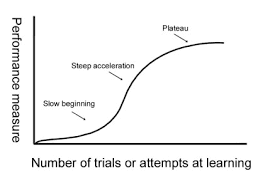August 02, 2024
10 great ‘beach reads’ for art and design lovers
It’s summer vacation season! Here’s a (hefty) list of the season’s best new design books you should take with you.
A “beach read” means different things to different people. There are those who simply shove a couple paperback thrillers or romance novels into their vacation bag and call it a day. And there are those who thrill at the nerd joy of a bit more substance—like, say, a no-holds-barred treatise on the ethics of their chosen profession (*heart flutters*). Or, a book seemingly containing every single piece of famous graphic design ever created. Sure, all that substance is often substantially more substantial—less “beach read” and more “tidepool tome.” But here’s to those who schlep hardbound books with 80-pound uncoated stock to the seaside respite of their choice.
No matter how loadbearing your beach tote is, if you’re looking to escape the mass-market mystery for some sublime design reading this summer, these 10 books will help you do just that.

Phaidon selected a remarkably humble title for a remarkably vast volume—one containing 500 of the most iconic pieces of design ever made. From record sleeves to Gutenberg bibles and virtually every designer you’ve ever heard of (per the publisher, 400 of them, from 33 countries and five continents), this book is a powerhouse of inspiration, not to mention an overwhelming collection of the raw materials that have shaped decades of designers. The book isn’t out just yet—but will ship mid-August, in time for your summer’s end sojourn.

Atlas of Never Built Architecture by Sam Lubell and Greg Goldin
If Graphic Classics contains every piece of brilliant design ever made, this book captures every brilliant (and, well, sometimes just brilliantly strange) piece of architecture never made. From the Domino’s Leaning Tower of Pizza to Frank Lloyd Wright’s (literally) mile-high skyscraper, the authors capture an endlessly fascinating taxonomy of facade futures that were not meant to be.

What It Means to Be a Designer Today: Reflections, Questions and Ideas from AIGA’s Eye on Design
I’m proud to have published many articles in Eye on Design over the years—because it was one of the best venues around for insightful industry commentary and critique, not to mention delightfully unexpected design odds and ends. AIGA may no longer be publishing it at the moment, but the good news is that this book (edited by Fast Company’s Liz Stinson and Scratching the Surface’s Jarrett Fuller) distills all the best parts of the site down into a 240-page volume that strikes at the heart of the book’s title—and, against all odds, nails it.

In the wake of the Cuba’s revolution, designers navigated the balance of international embargoes and consumer demand—and ultimately created a wholly Cuban take on Modernism in the process. This book (which accompanies a Cranbook exhibition that’s currently on view) bills itself as the first to document Cuban Midcentury design—and it does so with great discoverability, while revealing much more. Per the publisher, “This volume brings together a prolific cohort of artists, designers and architects that materialized the ideology of their time, and ultimately narrate[d] the country’s arc from revolutionary promise to authoritarian retrenchment.”

You may be surprised, as I—a Midwest native—was, that of all places, Indiana was home to a preeminent creative hub for incredible and impactful Modernist architecture. When I last visited Columbus, I cobbled together a tour based on Wikipedia pages—which is why I’m delighted that Shaw and Baan’s guide now exists and fills in the gaps of how this all came to be, covering works by Eero Saarinen, Eliot Noyes, I.M. Pei, “and the generations-long quest to develop the ideal American city through design excellence.”

Shopkeeping: Stories, Advice and Observations by Peter Miller
Compared to some of the behemoths on this list, this slim hardcover is indeed suitably portable and beach-worthy. In an airy 144 pages, shopkeeper Peter Miller—of his eponymous design bookshop in Seattle, which he opened in 1980—riffs on his trade, from the philosophies of designing a retail space to the nature of time within a shop. But one needn’t be a shopkeeper to appreciate what Miller brings to the page: meditative, humorous New Yorker–style musings that reveal the secret inner life of the highly designed ecosystems we take for granted.

Largely a fascinating visual collection—with the exception of a prologue by Ellen Lupton and a handful of essays—Iris Alba introduces you to Iris Alba, a “missing link when trying to understand Latin American book cover design,” as the book’s co-editor, Leandro Castelao, dubs her.
While Milton Glaser, Seymour Chwast, and the rest of the Pushpin group was working its pop and psychedelic magic in New York City, Alba flexed her own interpretation of it in Argentina, reshaping book cover design in Latin America in the process.

Modern Man in the Making by Otto Neurath
On face value, Neurath’s legendary 1939 book simply documents the era in which he lived via facts and figures. But viewed retrospectively, as Lars Müller Publishers notes, “The book can be seen as one of the most influential predecessors of today’s ever-present infographics. … Modern Man in the Making shows Neurath’s democratic endeavor to make knowledge intelligible and available to all.” This facsimile edition cleanly falls into the realm of a storied design curiosity—and because of that, I can confirm that there’s no better time to explore it than the veritable void of a vacation, when time is less of a premium and you’re free to let your mind frolic and weigh its impact.

Midsommar. Ex Machina. Everything Everywhere All At Once. You probably know A24’s eccentric (and perfect) films, but you might not know that the studio also has a damn good publishing line. Case in point: How Directors Dress, which “uses clothing to tell exciting new stories about directors, their lives, their movies, and the times in which they were made.” Featuring more than 200 photographs and writing by fashion and style journalists, the book grants entirely new insights into familiar films and their creators—and a symbiosis that’s far from surface level.

Footnotes From the Most Fascinating Museums by Bob Eckstein
Sure, this is a list of beach reads. But that doesn’t mean vacations don’t leave some among us yearning for the confines of a museum. Get the best of both worlds with this New Yorker cartoonist’s collection that captures more than 75 institutions (from MoMA and the Guggenheim to the La Brea Tar Pits and Museum) in 155 pieces of art. Each is a charming profile accompanied by an insight or reflection on the museum—and collectively they showcase just why, exactly, some of us might choose to haunt dark air-conditioned corridors when the warm ocean is right there in front of us.

ABOUT THE AUTHOR
(7)
Report Post






